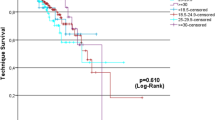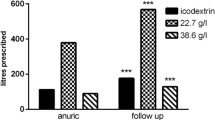Summary
Most physicians do not consider peritoneal dialysis (PD) to be the treatment of choice in obese patients with end-stage renal failure. In some but not all studies the incidence of infectious complications (catheter-associated infections and peritonitis) is higher than in patients with normal body mass index (BMI). Although mathematical models show that even continuous ambulatory PD with a daily dialysate treatment volume of 12 litres does not provide sufficient clearances in patients weighing 80 kg, adequate dialysis has been achieved in clinical studies in patients with BMI up to 46 kg/m2. Residual renal function is a very important factor for survival in patients undergoing PD and might be influenced by body weight; however, data are controversial, showing either a negative influence of high BMI on renal clearance or no association. The incidence of peritoneal leaks in PD is higher in obese patients than in other patients, because of the raised intra-abdominal pressure. In contrast, hernias do not occur more frequently in overweight PD patients and the risk of hernias seems to be greater in patients with lower BMI. It is well known that mortality rates of overweight patients on hemodialysis are lower than in those with normal body weight, but data on the influence of BMI on survival in PD patients are more controversial. In conclusion, there is no evidence that PD is absolutely contraindicated in patients with high BMI, especially if patients have a strong preference for this type of treatment.
Zusammenfassung
Die Indikation zur Peritonealdialyse (PD) bei übergewichtigen Patienten wird generell eher mit großer Zurückhaltung gestellt. Die Rate infektiöser Komplikationen (Katheterinfektionen und Peritonitiden) ist in manchen Studien bei übergewichtigen Patienten höher als bei normalgewichtigen PD-Patienten, in anderen Studien findet sich kein Unterschied. Obwohl mathematische Modelle voraussagen, dass selbst mit einer kontinuierlichen ambulanten PD und einer Dialysatmenge von 12 Litern/Tag bei einem über 80 kg schweren Patienten keine adäquaten Clearances zu erzielen sind, ist in klinischen Studien eine ausreichende Dialysequalität bis zu einem Body-Mass-Index (BMI) von 46 kg/m2 belegt. Die residuale Nierenfunktion ist ein weiterer wesentlicher prognostischer Parameter und könnte durch den BMI beeinflusst werden. Die Datenlage bei PD-Patienten ist hierzu kontroversiell. Manche Studien beschreiben eine negative Korrelation zwischen erhöhtem BMI und renaler Clearance, andere Arbeiten zeigen wiederum keine Assoziation. Durch den erhöhten intraabdominellen Druck kommt es bei adipösen PD-Patienten zwar vermehrt zu peritonealen Leaks, aber nicht zu einem häufigeren Auftreten von Hernien. Letztere kommen sogar eher häufiger bei PD-Patienten mit niedrigem BMI vor. Eine niedrigere Mortalitätsrate bei Übergewicht, wie das bei Hämodialysepatienten gut belegt ist, scheint bei PD-Patienten nicht klar bewiesen. Zumindest dürfte aber das Überleben in den meisten Studien nicht schlechter sein als bei normalgewichtigen PD-Patienten. Aufgrund der derzeitigen Datenlage kann der hohe BMI nicht als absolute Kontraindikation für eine PD-Behandlung angesehen werden. Es gibt daher a priori keinen Grund, einem Patienten mit Übergewicht dieses Verfahren vorzuenthalten, insbesondere wenn der Wunsch nach einer PD vorliegt.
Similar content being viewed by others
Author information
Authors and Affiliations
Corresponding author
Rights and permissions
About this article
Cite this article
Schmekal, B. Peritoneal dialysis in patients with high body-mass index. Wien Klin Wochenschr 117 (Suppl 6), 40–45 (2005). https://doi.org/10.1007/s00508-005-0495-8
Issue Date:
DOI: https://doi.org/10.1007/s00508-005-0495-8
Keywords
- Renal replacement therapy
- Peritoneal dialysis
- Continuous ambulatory peritoneal dialysis
- Body mass index
- Obesity




